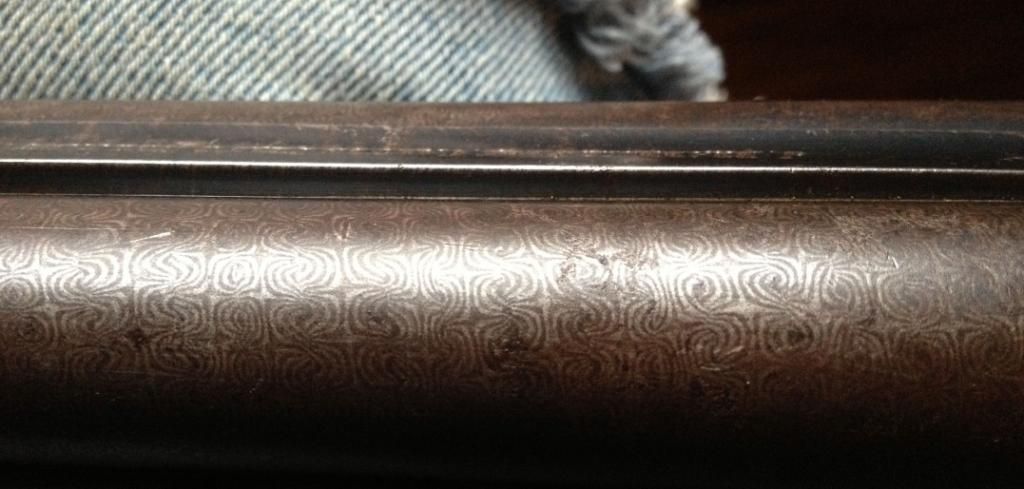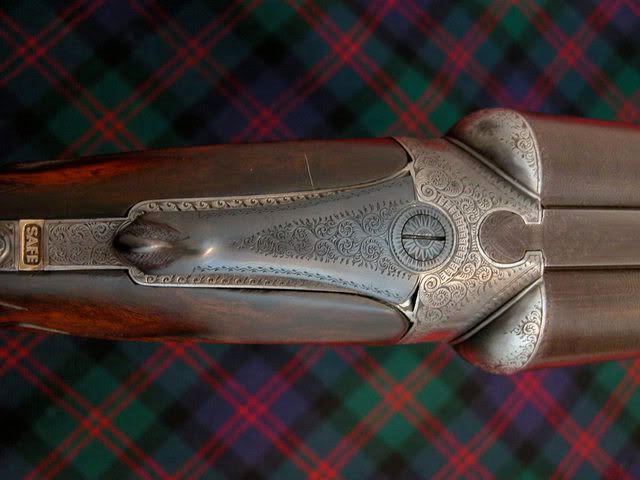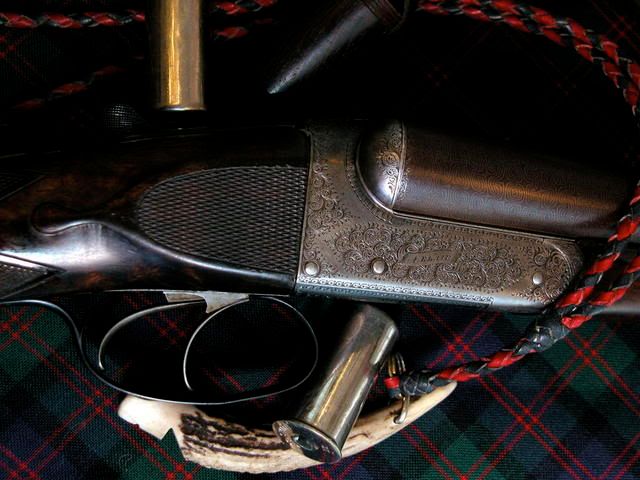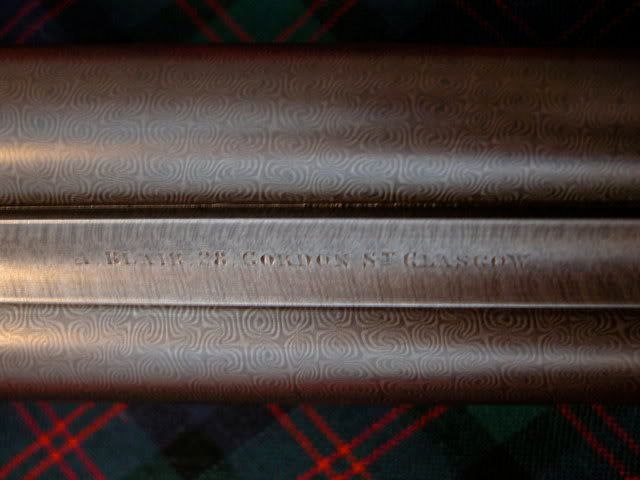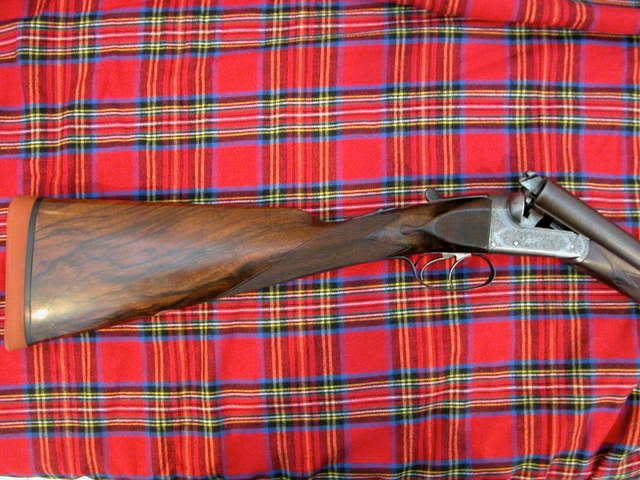So how's my analysis? J Braddell & Son 12 boxlock - 10/30/12 02:08 AM
Hi all - long time reader, first time poster. I've spent a lot of time here trying to learn about a sxs that I bought a few years ago; would very much appreciate your insights and corrections. Hope the pictures aren't too big and the blathering isn't too much; we've gotten a little cabin feverish already while staying in from the storm.
As background, I have a thing for Irish guns, although usually not enough coin for the really nice ones so no Dublin blunderbusses or cased Trulock pistols, etc - but a nice lot to enjoy. The RIC is pretty original, the ER-prefix #1 needs wood & nose cap, of course. I don't worry too much about returning a military arm to original configuration once it's been messed with like that #1.
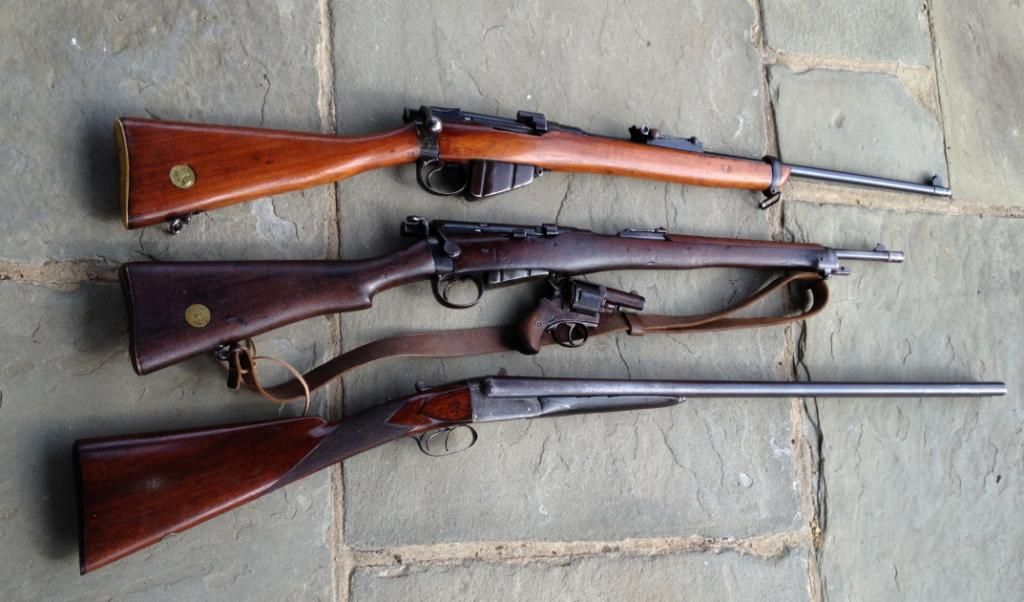
The Braddell is another story. While the screw heads say it's been a little messed with I'm not going to dig into it past a field strip and cleaning with oil & toothbrush. Here's what I think I know about it, and I'd love to learn more about who might have made it and what next steps make sense.
While worn in places and clearly knocked about some the action is very tight. Some dings and pitting in the barrels. Top rib reads "J. Braddell & Son Castle Place Belfast." Definitely restocked, but the forearm looks original based on wear. The engraving seems pretty substantial, but I've got no idea whether this was a high quality piece or just a fancied up commodity. 3-iron oxford if I'm reading the damascus right?

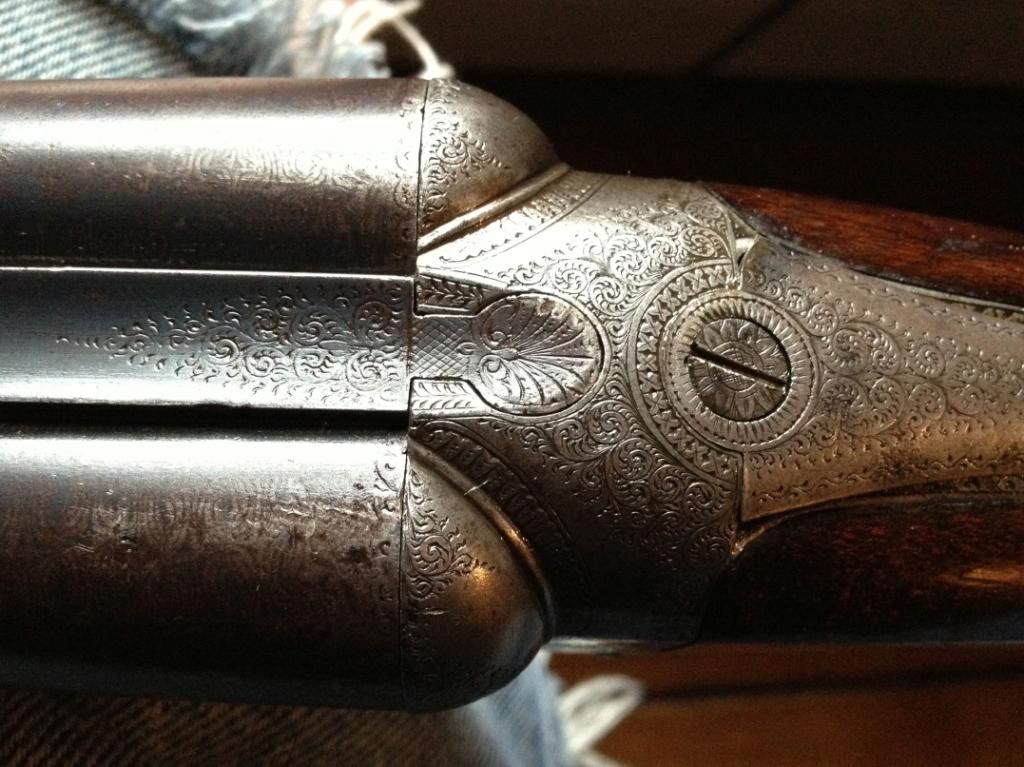
Proof marks say London, 1875-87:

Water table has limited markings, but also London. 5375 is the Braddell serial - I'm betting that the other number is the maker's serial?
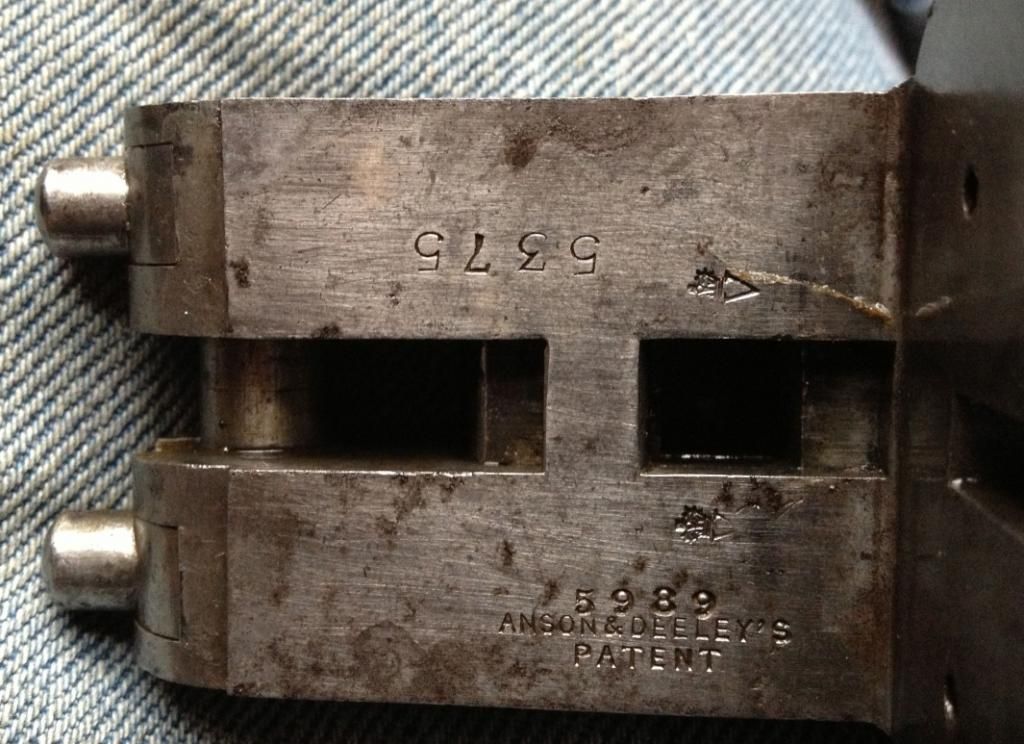
From what I've read, Braddell likely bought their components at this time (if not completed guns) from Bentley & Playfair - in fact, after the elder Braddell's death the business was owned by Charles Playfair, son of the B'ham gunmaker. They did make guns (Bulldog revolvers, for sure, maybe shotguns), though.
Why the London proofs if it's a Bentley & Playfair or other trade gun? I suppose that an enterprising Birmingham maker would (for a fee) run one's guns down to London as part of building them to your spec, so that they had the London gun cachet?
Even though I bought this as a curio,for the name & origin, I'd like to know if it's got particular value to insure. Haven't seen many sales to gauge value by, and there are so many factors that determine double gun value. I suspect it's a mid-line trade gun worth at best the $750 I paid for it but then again, there's the blind pig and the acorn to consider...
Regardless, I'll have it serviced and inspected to shoot. If a trade gun and not shootable perhaps have the barrels etched before it goes on the wall? Even middling damascus can look pretty good as art.
Thanks for your consideration!
As background, I have a thing for Irish guns, although usually not enough coin for the really nice ones so no Dublin blunderbusses or cased Trulock pistols, etc - but a nice lot to enjoy. The RIC is pretty original, the ER-prefix #1 needs wood & nose cap, of course. I don't worry too much about returning a military arm to original configuration once it's been messed with like that #1.

The Braddell is another story. While the screw heads say it's been a little messed with I'm not going to dig into it past a field strip and cleaning with oil & toothbrush. Here's what I think I know about it, and I'd love to learn more about who might have made it and what next steps make sense.
While worn in places and clearly knocked about some the action is very tight. Some dings and pitting in the barrels. Top rib reads "J. Braddell & Son Castle Place Belfast." Definitely restocked, but the forearm looks original based on wear. The engraving seems pretty substantial, but I've got no idea whether this was a high quality piece or just a fancied up commodity. 3-iron oxford if I'm reading the damascus right?


Proof marks say London, 1875-87:

Water table has limited markings, but also London. 5375 is the Braddell serial - I'm betting that the other number is the maker's serial?

From what I've read, Braddell likely bought their components at this time (if not completed guns) from Bentley & Playfair - in fact, after the elder Braddell's death the business was owned by Charles Playfair, son of the B'ham gunmaker. They did make guns (Bulldog revolvers, for sure, maybe shotguns), though.
Why the London proofs if it's a Bentley & Playfair or other trade gun? I suppose that an enterprising Birmingham maker would (for a fee) run one's guns down to London as part of building them to your spec, so that they had the London gun cachet?
Even though I bought this as a curio,for the name & origin, I'd like to know if it's got particular value to insure. Haven't seen many sales to gauge value by, and there are so many factors that determine double gun value. I suspect it's a mid-line trade gun worth at best the $750 I paid for it but then again, there's the blind pig and the acorn to consider...
Regardless, I'll have it serviced and inspected to shoot. If a trade gun and not shootable perhaps have the barrels etched before it goes on the wall? Even middling damascus can look pretty good as art.
Thanks for your consideration!

